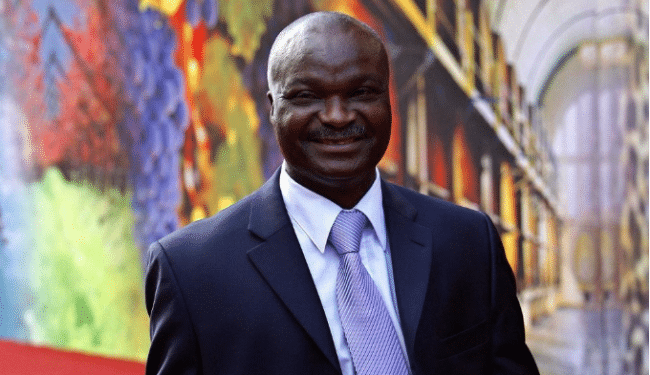This day 67 years ago a man was born in Yaoundé, capital of Cameroon, little did the world know that he would rise to become one of the greatest footballers of all time?
Known for his trademark hip wiggling dance, Cameroonian international Albert Roger Miller took the world by storm when at 38 years old he scored the goal that ensured the indomitable lions’ qualified for the quarter-finals at the Italia 90 FIFA world cup; the first by an African nation.
Born in Yaoundé on May 20, 1952, Roger Milla was a shock inclusion in Cameroon’s squad to Italia 90 after the country’s then president Paul Biya insisted that the 38-year-old must be part of the squad.
Also Read: CAF Confederation Cup: Horoya AC Hold Enyimba At Aba In Quarter Final First Leg
Biya’s demand was seen as a new low for African football following increasing cases of absurd interventions of powerful politicians, who have repeatedly interfered in team selection for the sport’s global showpiece event.
President Biya had watched Roger Milla play a charity game a few weeks earlier before the squad was announced, he was fascinated by the skills of the man who was turning 38 in a couple of days.
Milla was on the verge of hanging his boots after competing for the West African nation at the 1982 world cup finals, featuring in three Africa cup of nations finals and scoring more than 100 Ligue 1 goals for Bastia, St Etienne and Montpellier.
Biya’s insistence turned out to be a fortuitous master stroke as the veteran forward captured international imagination, when wiggling his hips in a provocative assault on the corner flag as he celebrated a goal in Cameroon’s unlikely march to the world cup quarter-finals.
The dance is better remembered than the breakaway goal against Colombia as Cameroon’s indomitable lions went further at the tournament than any African team had been before, eventually losing to England in extra time in a tense quarter-final.
In all, he scored four goals at Italia 90 and extended his record as the tournament’s oldest goal scorer when he netted one more at the world cup in the U.S. four years later.
By then Milla had become a symbol for a continent, with his exploits after emerging from semi-retirement earning him the accolade as the best African footballer of the 20th century.








